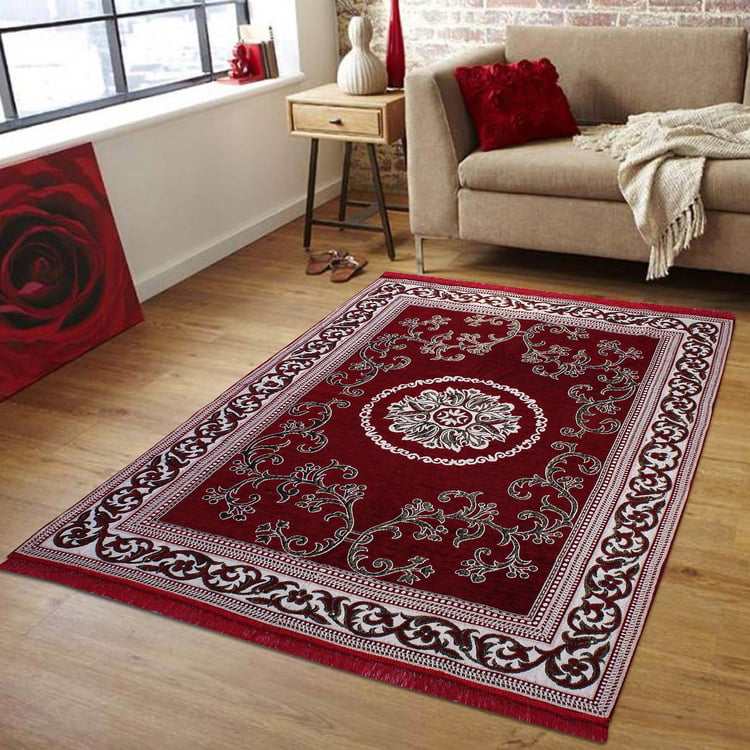INTRODUCTION
Jacquard fabric is not just a type of textile; it represents a significant milestone in the evolution of fabric manufacturing. Named after the inventor Joseph Marie Jacquard, this fabric is renowned for its intricate patterns and advanced weaving techniques. The Jacquard loom, which revolutionized textile production in the early 19th century, laid the groundwork for many modern technologies, including computer programming.
By the end of this presentation, you’ll have a comprehensive understanding of Jacquard fabric, its significance, and its place in both historical and modern contexts. Let’s begin our journey into the world of Jacquard fabric!
What is Jacquard Fabric?
Jacquard fabric is a type of textile woven on a Jacquard loom, known for its ability to produce intricate and elaborate patterns. Unlike traditional weaving methods, Jacquard fabric incorporates advanced technology to achieve complex designs directly into the fabric. The defining characteristic of Jacquard fabric is its detailed and varied patterns, which are created through the manipulation of individual warp threads.
The Jacquard loom utilizes a system of punched cards or a digital control system to manipulate the warp threads individually, creating elaborate designs.
History of Jacquard Fabric
Origins:
Joseph Marie Jacquard: Invented the Jacquard loom in 1804 in France. His invention was a major advancement in weaving technology.
Early Influence: The loom’s design was inspired by earlier weaving techniques but added the capability for more complex patterns through automation.
Impact:
Industrial Revolution: The Jacquard loom was a significant step in mechanizing textile production, influencing later technologies, including computer programming and punch card systems.
How does Jacquard Looms Work?
Mechanism:
Punched Cards: Early Jacquard looms used cards with holes to control the lifting of warp threads. Each card represented a row of the pattern.
Modern Technology: Today’s Jacquard looms may use computerized systems to achieve the same control with greater precision and flexibility.
Process:
Pattern Creation: Cards or digital instructions dictate which threads are raised or lowered, allowing for the creation of intricate designs without manual intervention.
Characteristics of Jacquard Fabric
Designs:
Complex Patterns: Capable of producing elaborate and detailed designs, including florals, geometrics, and textures.
Versatility: Patterns can be intricate and varied, from simple repeats to elaborate scenic designs.
Texture:
Relief: Often has a raised pattern due to the weaving technique, giving it a textured feel.
Durability:
High-Quality: Typically durable and resistant to wear and tear, making it suitable for various applications.
Types of Jacquard Fabrics
Brocade:
Description: Rich, ornate fabric with intricate patterns, often incorporating metallic threads.
Use: Common in formal attire and upholstery

Damask:
Description: Reversible fabric with patterns woven into it, not printed or embroidered on the surface.
Use: Popular for elegant home furnishings and table linens.
Tapestry:
Description: Heavily patterned fabric, often used for wall hangings or upholstery.
Use: Known for its artistic designs and heavy texture.
Applications of Jacquard Fabric
Fashion:
High-End Clothing: Used in luxury garments, formal wear, and designer accessories due to its rich appearance and texture.
Home Decor:
Upholstery & Drapery: Ideal for curtains, sofas, and cushions, offering both style and durability.
Bedding: Adds a touch of elegance to bed linens and blankets.
Artistic Uses:
Wall Hangings: Tapestry Jacquard fabrics are used for creating decorative wall art.
Advantages of Jacquard Fabric
Versatility:
Design Possibilities: Allows for a wide range of patterns, from simple to highly complex, providing design flexibility.
Quality:
Durability: Known for its longevity and high-quality finish.
Aesthetic Appeal: The fabric’s intricate patterns add visual and tactile richness.
Customization:
Tailored Designs: Can be customized to meet specific design needs and preferences, making it suitable for bespoke projects.
Modern Developments
Technological Advances:
Digital Looms: Modern Jacquard looms use digital technology to achieve greater precision and design complexity.
Automation: Improved efficiency and capabilities in creating elaborate designs.
Sustainability:
Eco-Friendly Materials: Innovations in using sustainable fibers and environmentally friendly production processes.
Efficient Production: Modern techniques reduce waste and energy consumption





